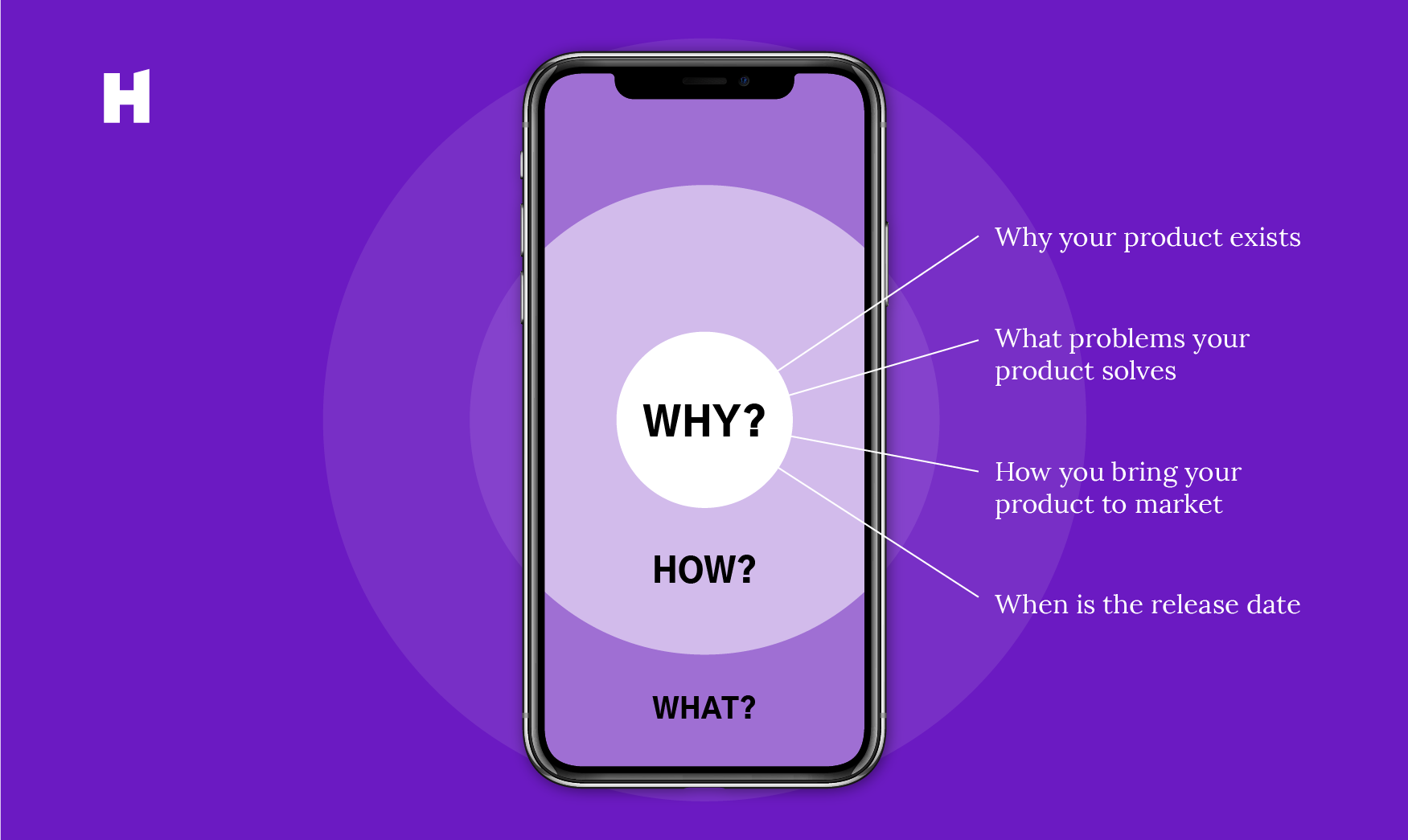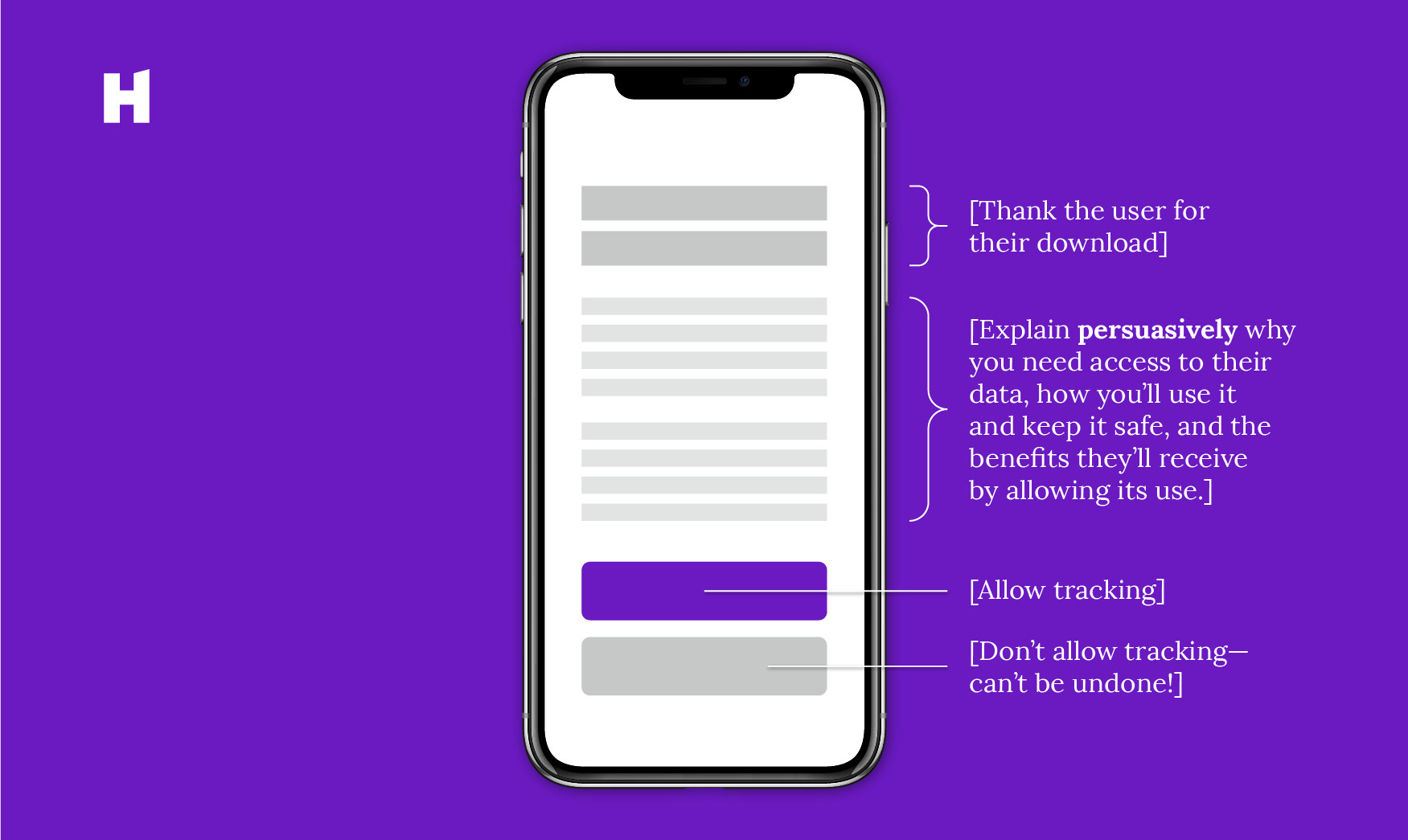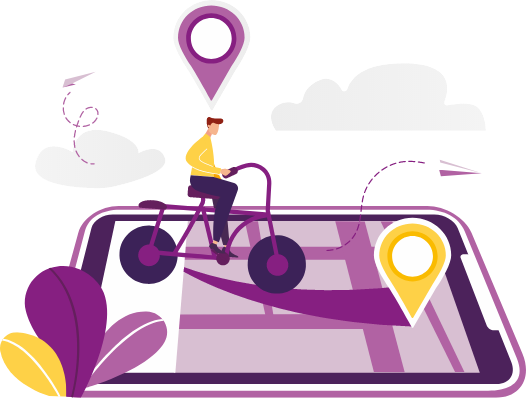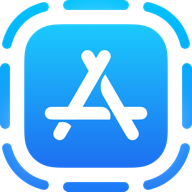NEW LAUNCH: Weill Cornell Medicine's Maya app is now available for Android!
NEW LAUNCH: Weill Cornell Medicine's Maya app is now available for Android!

Apple and Facebook are duking it out, iPhone users are updating their OS, and product managers are wondering:
“How will iOS 14 affect our mobile product roadmap?”
Look, we get that there’s an existential battle happening right now over data privacy. In fact, you might say it’s a war that’s been raging since GDPR brought online data privacy to the foreground in April of 2016 and the wave of subsequent brand emails.
It’s easy to see both sides of the argument—Facebook and other digital advertisers want to offer businesses tools to send relevant ads, Apple wants people to understand how and when their data is being used (and the ability to opt-in or decline to its use).
We’re not here to pick sides.
As a mobile product consultancy, we’re here to make sure businesses have the tools and education to adapt to the changes wrought by iOS 14. We’ve already written extensively about the changes coming to IDFA, and today we’d like to supplement that with some tactical tips for adjusting your product roadmap.
The reality is simple:
Mobile advertising technology progressed faster than public policy or user awareness and swung the pendulum in favor of media companies, digital advertisers, and publishers. Regardless of your position on data privacy, iOS 14 is returning some of that power back to the users with a simple and easy-to-understand opt-in process.
Developers, marketers, and product managers—We’re all in this one together. We’ll see how it works out in the long term, but for now, it’s important to make sure we’re doing everything we can to make the best of the situation.
And before we dive into the code or rework our marketing strategy from the ground up, the best thing to do is take a look at our product roadmap and see what sort of adjustments need to be made.
In this post, we’ll start with a refresher on the finer points of a mobile product roadmap, discuss how traffic attribution works for mobile, and provide a tactical guide for getting your mobile product ready for iOS 14.
Let’s get started
Before we dive into mobile traffic, advertising, and iOS 14, it’s important to provide a brief explanation of what a product roadmap is. Maybe yours is perfect and this will confirm that, maybe it’s a good opportunity to look for improvements, or, if you’re new to the concept of product roadmaps, this will be a good foundation.
There are lots of definitions for a product roadmap, but here’s one of our favorite is this quote from C. Todd Lombardo from the book “Product Roadmaps Relaunched” by Bruce McCarthy:
A product roadmap should:
Another way to think of it is that the product roadmap is the ‘why’ in your planning.

A mobile product roadmap will serve several functions for your organization including:
A successful product roadmap will have every team—from marketing to management to development—excited and extremely clear about the foundational product strategy.
Product roadmaps are generally built for the short-to-medium term—In tech, it’s hard to predict what’s going to happen in a year, so they’re usually built around quarters.
“A successful product roadmap will have every team excited and extremely clear about the foundational product strategy.”
So what goes into a mobile product roadmap? At a minimum, the following items should be included:
As to the actual makeup of product roadmaps, you have several different options. Early-stage products often forgo dates and deadlines to focus on product/market fit, while mature products with revenue tied to them often need firm deadlines to hit release dates. Your individual situation will determine which is right for you.
If you need help bringing your product roadmap to life, tools like ProductPlan (which is what we use at Heady) can help with formatting and structure.
Now that you have a solid background on mobile product roadmaps, let’s briefly cover some mobile traffic basics. This will give you the understanding you need to flesh out your plans for dealing with iOS 14 data privacy updates.
“And as you likely know by now, iOS 14 has completely nuked the way developers and marketers use them.”
Just like a keto diet, there aren’t any cookies on iOS mobile devices. Instead, they use what’s called an Identifier for Advertisers (IDFA) to track user response to ads, pageviews on websites, and activity in applications. It’s a unique, random ID number assigned to every iOS device.
And as you likely know by now, iOS 14 has completely nuked the way developers and marketers use them.
Advertisers and applications can still use IDFA, but only if the user allows them to.
The CEO of Branch, a mobile measurement partner, said he’d “ … be shocked if more than 5% of people opted in.”
So that’s the new reality we’re operating in. Without accurate attribution, it will be much more difficult to truly understand where your traffic comes from. For mobile advertisers, there are a few key takeaways:
Apple has provided its own attribution system called the SKAdNetwork that it considers privacy-friendly, but marketers have claimed it’s not sophisticated enough. The days of advanced segmentation and reporting are, for the time being, behind us.
What a lot of this boils down to is a specific prompt that will now appear on your iPhone screen at some point that looks like this:
How your users respond to this notification can have a huge impact on your business, which is precisely why it’s important to get this iOS 14 consideration into your mobile product roadmap as quickly as possible.
![]()
At this point you might be wondering:
“What am I supposed to do with all this!?!”
Don’t worry, this is where we come in—We’re here to help :)
In order to update your mobile product roadmap to adjust to iOS 14, you’re going to want to zoom in on a few key areas.
First off, take a look at every app that calls the IDFA through the SDK and make a list. You’ll likely want to get in touch with your SDK provider and see what their response to iOS 14 is while you’re at it.
Next, you’ll want to make a decision if you’re going to use Apple’s SKAdNetwork and if yes, you’ll want to familiarize yourself with the documentation.
Additionally, find out if your CRM or any other system is using IDFA and understand how that will change if it’s absent.
As we mentioned above, that single prompt from iOS 14 has the power to strip away a lot of useful data through the removal of an IDFA. In an instant, the user will decide your fate. You have the ability to customize the second line of that prompt, but that’s really not much room to state your case.
You can, however, take a proactive approach here, because you get to decide when that prompt appears.
You might want to do a bit of research and develop an internal prompt before you issue the iOS 14 prompt. This will give you more control over the design and communication you’re issuing to your users, allowing you to make a stronger case for why you need their data and how you’re going to use it. Depending on the relationship you have with your users and the incentives you’re able to offer, you might be able to make a compelling argument to allow tracking.
Finally, you’re going to want to take stock of how you’re getting new users. If you’re using digital ad platforms to generate app downloads, you’ll want to look specifically at what data you’re using for your targeting.
For instance, Facebook lookalike and retargeting audiences for mobile will be using IDFA, so any campaigns using those tools will likely have dramatic decreases in performance and/or reporting.
How many app downloads are coming from these audiences? What is the current and historical CP? If you did not have access to those audiences, what effect would that have on your total app downloads and CPA?
In that same vein, any type of marketing, advertising, or functionality that is based on app engagement (including monetization) will also be affected by users who opt out of tracking. You’ll want to watch your monetization numbers closely for any dips, while also adjust or pausing your ad campaigns that rely on this engagement.
If you were relying heavily on paid ads for new downloads, however, you’re going to want to seriously examine other potential traffic sources such as email and SEO during this time.
“You’re going to want to seriously examine other potential traffic sources such as email and SEO during this time.”

A great way to obtain an organic app download (not paid) is to provide an awesome experience the first time somebody is exposed to your brand. New with iOS 14 is a feature called App Clips, which allows users to experience a small piece of functionality from your app without actually downloading it.
App Clips can help you capture more transactions, build goodwill, and increase app downloads from organic interactions. To learn more about App Clips, check out our free ebook below.

Download our free eBook with step-by-step instructions for implementing App Clips for your brand plus real-life examples of App Clips in action.


Download our free eBook with step-by-step instructions for implementing App Clips for your brand plus real-life examples of App Clips in action.
Our emails are (almost) as cool as our digital products.
Your phone will break before our apps do.

© 2025, Heady LLC.